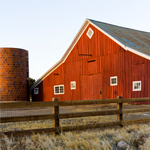
My family embarked on a vacation a few weeks ago that involved a 2,700 mile road trip to visit relatives in Minnesota. Along the way, we stopped at Hincheley’s Dairy Farm, a third generation family-owned farm in Cambridge, Wisconsin.
In addition to farming 2,800 acres and raising nearly 300 cattle, the owners offer personally guided tours of their farming operation. Being the city slickers that we are, we were interested in learning about a different way of life. And let’s be honest, who can pass up a chance to milk a cow!
Our tour guide was Tina Hincheley, a second generation owner along with her husband, Duane. Tina led us through the dairy operations and educated us on the nuances of running such a robust farming business. One comment she made struck an immediate chord with me. She talked about the history of the farm, and in particular how it has been forced to evolve as the family has grown because with each generation, more family members have become dependent upon the resources it provides.
The farm was initially acquired by Tina’s in-laws in 1958, at which time they had 13 cows. As the family grew, so did the cows, nearly tripling to 35 by 1993. That year, though, Tina’s mother-in-law experienced some health issues. Between that and additional family members to support, the farm was forced to increase its herd to 73. A few years later, Tina and Duane decided to acquire more land, knowing that their family was going to continue to grow, as Tina was pregnant with the couple’s twins.
Nearly 25 years later, Tina and Duane are planning for two of their children to start taking a more active role in the family business. So, they are investigating robots for milking and other ways to grow and become more efficient in the milk production process to ensure that the farm will be able to support the next generation.
What I found so fascinating was how intuitively and clearly the Hincheleys understood their need to evolve the farm as more family members became dependent upon the resources it provides. Farming is a difficult business, subject to a lot of external and unpredictable forces like weather, livestock health issues, and commodity prices. To navigate these uncertainties and successfully continue to grow the business to the extent that it could support the growing number of family members dependent upon it, the Hincheleys brainstormed ways to become more efficient in their operations and introduced new revenue streams, such as offering tours and raising crops like corn and soybeans.
It made me wonder how many family businesses don’t see this situation as clearly as the Hincheleys did. How often does a family business find itself with more mouths to feed, so to speak, as the family grows from one generation to the next yet isn’t proactive enough in taking steps to evolve the business? Growth is nearly always the top priority for any business. But in a family business, the quest for growth takes on a new meaning. The business needs to grow not just for its own survival, but for the family’s as well. So how will you evolve your family business to ensure growth for the next generation?
Steven E. Staugaitis is a director at Kreischer Miller 
You may also like:


